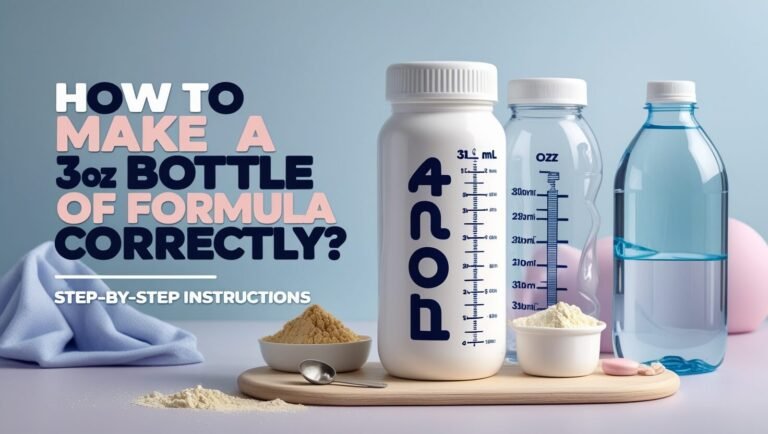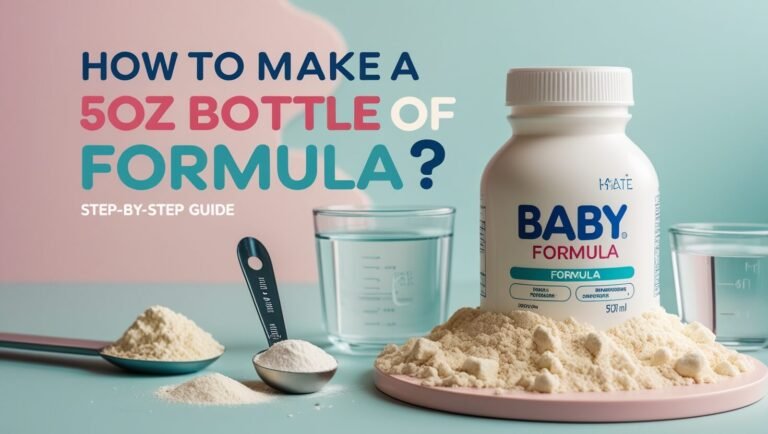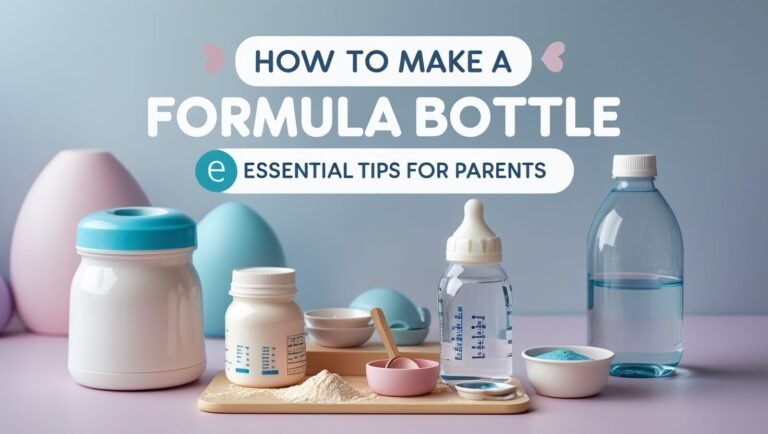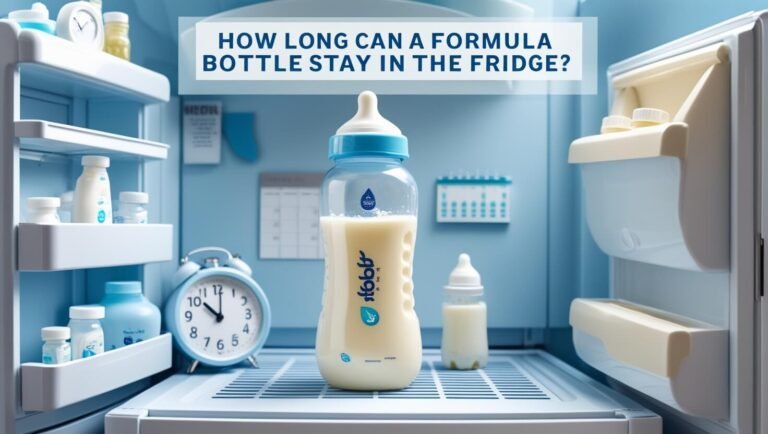How Long Can A Formula Bottle Be Left Out: What You Need to Know
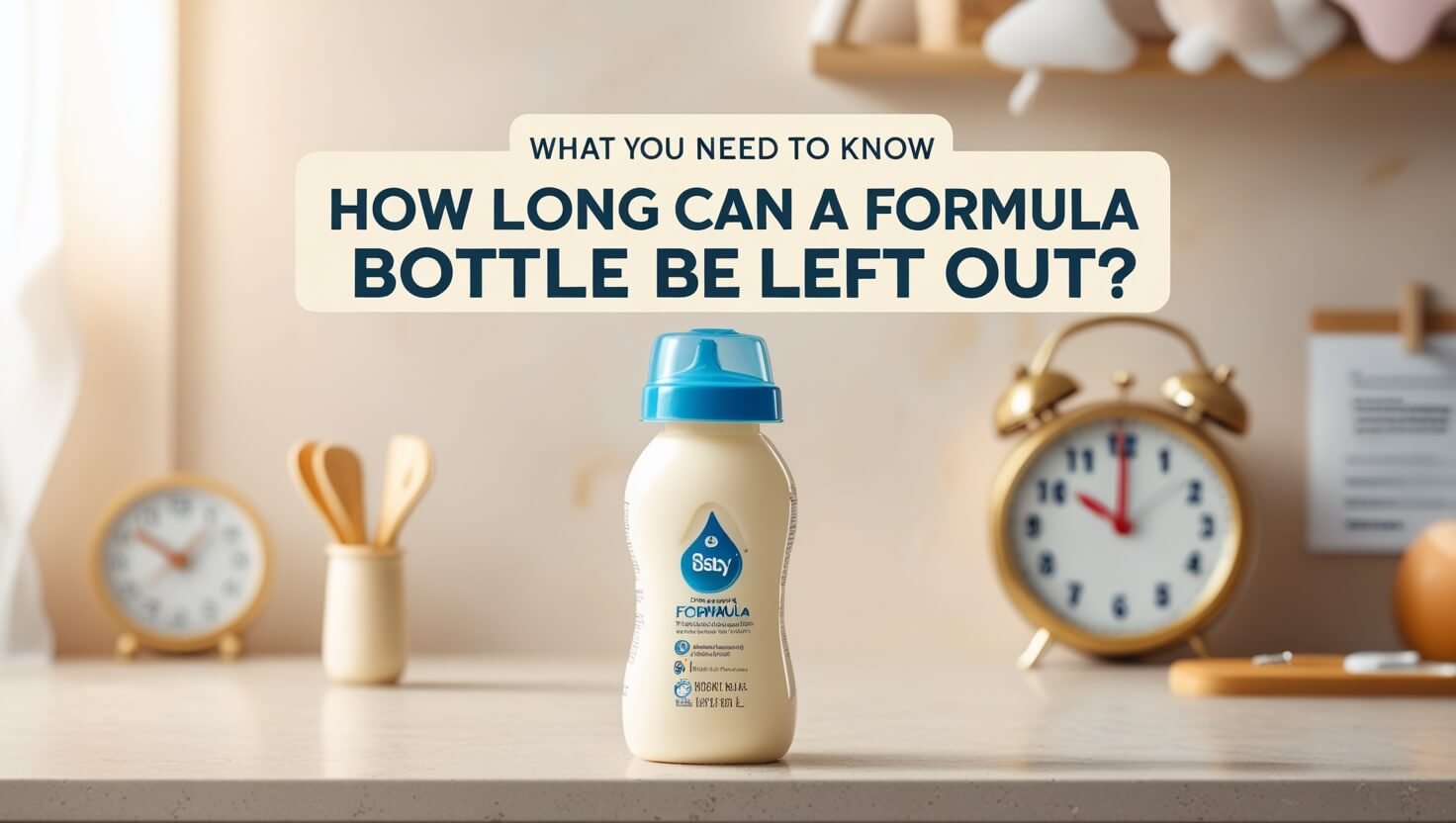
How long can a formula bottle sit out safely? This is a big worry for many parents. Knowing the answer is key to keeping their babies healthy. It’s important to store formula bottles correctly to avoid contamination and spoilage.
Experts say a formula bottle can stay out for up to 2 hours. But, it’s vital to store it right to keep the formula good. Finding a balance between ease and safety is important. By following the right storage times, parents can give their babies safe and healthy formula, whether it’s at room temperature or in the fridge.
Formula Bottle Safety Basics
Understanding infant formula safety guidelines is key. It’s important to know how to handle and store formula milk. Feeding baby formula safely means following certain rules.
One important rule is to not leave a prepared formula bottle out for more than two hours. This is to stop bacteria from growing. On very hot days, it’s even shorter. Also, throw away leftover formula after an hour to avoid bacterial growth.
Here are some important tips for storing formula milk:
- Prepared, unoffered bottles can be stored in the refrigerator for up to 24 hours.
- Leftover formula should be discarded after an hour.
- Prepared batches of formula can be stored in the refrigerator for no more than 24 hours.
Carefully store and feed formula milk to keep your baby healthy.
| Formula Type | Storage Duration |
|---|---|
| Prepared, unoffered bottle | Up to 24 hours in the refrigerator |
| Leftover formula | Discard after 1 hour |
| Prepared batch | Up to 24 hours in the refrigerator |
How Long Can a Formula Bottle Be Left Out
Storing formula bottles at room temperature needs careful attention. It’s important to follow guidelines to keep the formula safe and good quality. A formula bottle can stay out for up to 2 hours, but some brands say it’s best to use it within 1 hour for safety.
Remembering formula expiration time and formula preparation tips is key. Also, safe formula handling practices, like keeping it clean and sanitized, are very important.
Here are some important guidelines to remember:
- Unused formula bottles can be stored at room temperature for up to 2 hours.
- After a baby drinks from a bottle, don’t save the formula. Discard any leftover within an hour.
- Formula bottles that have been heated should be used within 1 hour. Any leftover should be thrown away.
Keep track of formula expiration, preparation tips, and safe handling to ensure it is safe and high quality.
Refrigerated Formula Storage Rules
Storing formula correctly is key to keeping it safe and fresh. Refrigerated formula storage has its own set of rules. By following these, you can keep your baby’s formula in top condition.
For room temperature bottle feeding, formula can sit out for up to two hours. But, it must be refrigerated within two hours to avoid bacterial growth. Always use airtight containers to prevent contamination.
Optimal Storage Temperature
The best temperature for storing formula in the fridge is between 39°F and 41°F. This stops harmful bacteria from growing and keeps the formula fresh. Make sure your fridge is at this temperature to keep your baby’s formula safe.
Maximum Storage Duration
The time you can store formula in the fridge varies. Liquid concentrate and ready-to-feed formulas should be used within 48 hours. Powder formula can last up to 30 days after opening.
Container Considerations
Choosing the right containers is important for storing formula. Airtight containers are best because they prevent contamination and keep the formula fresh. Always label the containers with the date and time you prepared the formula.
Store formula in airtight containers, check fridge temperature, and use it within the recommended time to keep it fresh and nutritious.
Travel Storage Solutions
When traveling with infant formula, it’s key to follow the right formula bottle storage steps. The CDC says prepared formula can spoil faster than breast milk at room temperature. So, it’s important to consume it quickly. Here are some tips for storing formula milk while on the move:
For short trips, use an insulated bag with ice packs for formula storage. But for longer trips, pack empty bottles and make the formula when you get to your destination. Always check the formula’s temperature before feeding to make sure it’s not too hot or cold. This ensures feeding baby formula safely.
Here are some more tips for traveling with infant formula:
- Check with your airline about carrying prepared formula through security
- Pack a small cooler with ice packs to keep the formula cold
- Always wash your hands before preparing the formula
- Use a clean and sanitized bottle and nipple for each feeding
By following these tips, you can keep your baby’s formula safe and of good quality, even when you’re traveling. Always focus on formula bottle storage and storing formula milk to keep your baby healthy and happy. For more info on feeding baby formula safely, talk to your pediatrician or a healthcare expert.
| Storage Method | Storage Time |
|---|---|
| Room Temperature | Up to 1 hour |
| Insulated Bag with Ice Packs | Up to 2 hours |
| Refrigerator | Up to 24 hours |
Formula Preparation Best Practices
Preparing formula safely is key for your baby’s health. It’s important to follow formula preparation tips that focus on cleanliness and accuracy. Make sure to sterilize nipples and bottles in boiling water for 5 minutes before use.
Storing formula correctly is also vital. Don’t leave prepared formula out for more than two hours. Also, finish leftover formula in the bottle within an hour to avoid bacterial growth. These steps help keep your baby’s formula safe and healthy.
Clean Equipment Requirements
Clean equipment is essential for safe formula preparation. Always wash your hands before starting and make sure all utensils and bottles are clean and sanitized. By focusing on clean equipment and following formula preparation tips, you can lower the risk of contamination and keep your baby safe.
Water Temperature Guidelines
Following water temperature guidelines is another critical step. Boil water for a full minute, then cool it to the right temperature before mixing with formula. This step is key for safe formula handling and storing, as it stops harmful bacteria from growing.
Mixing Techniques
Proper mixing techniques are also important. Follow the manufacturer’s instructions for the right formula to water ratio. Make sure to mix the formula well to avoid lumps. By using these techniques and focusing on storing formula properly, you can ensure your baby’s formula is safe, healthy, and nutritious.
Storage Container Selection
Choosing the right containers for storing formula milk is key. Feeding baby formula safely means paying attention to the container type. Also, knowing the formula’s expiration time is important for keeping it fresh.
For storing formula, airtight containers or zip-top bags work well. Store unopened formula in a cool, dark place until it expires. After opening, keep it in the fridge for up to 30 days or until it expires, whichever comes first.
Here are some tips for storing formula milk:
- Use a clean and dry container to store the formula.
- Keep the container away from direct sunlight and heat sources.
- Store the formula in the refrigerator at a temperature of 40°F (4°C) or below.
- Use the formula within the recommended time frame, usually 24 hours after preparation.
By following these tips and picking the right containers, you can keep the formula safe and fresh. This makes it easier to store formula milk and feeding baby formula safely while keeping an eye on the formula expiration time.
| Formula Type | Storage Time | Storage Location |
|---|---|---|
| Unopened Formula | Until Expiration Date | Cabinet or Pantry |
| Opened Formula | Up to 30 Days | Refrigerator |
| Prepared Formula | Up to 24 Hours | Refrigerator |
Temperature Testing Methods
Testing the temperature of formula is key to keeping it safe and good quality. When preparing formula, controlling the temperature is very important. Parents need to know the right temperature ranges for storing and making formula.
There are two main ways to check the formula’s temperature: using a digital thermometer and the touch test.
Digital Thermometer Use
A digital thermometer gives an exact temperature reading, which is vital for storing formula properly. It’s great for making formula because it makes sure the water is just right for the baby.
Touch Test Guidelines
The touch test is a simple way to check the formula’s temperature. By feeling the formula against the wrist, parents can tell if it’s too hot or too cold for their baby. It’s handy when you don’t have a digital thermometer.
By using these temperature testing methods and following formula preparation tips, parents can make sure their baby’s formula is safe and healthy. Remember, safe formula handling and storing formula properly are key to avoiding contamination and keeping the formula quality high.
Common Storage Mistakes
When it comes to formula bottle storage, there are several common mistakes that parents should avoid. These mistakes can affect the safety and quality of the formula. Not following the proper storage procedures is a big mistake. It can lead to contamination or spoilage of the formula.
To avoid these mistakes, it’s essential to follow the guidelines for storing formula milk and feeding baby formula safely. Here are some common storage mistakes to watch out for:
- Not refrigerating prepared formula within a certain time frame
- Leaving formula bottles at room temperature for too long
- Not discarding leftover formula in a bottle after a certain period
- Not following the proper preparation instructions on the formula container
By being aware of these common storage mistakes, parents can take the necessary steps. They can ensure the safe storage and handling of their baby’s formula. This way, they can provide their baby with a healthy and nutritious start in life.
| Formula Type | Storage Guidelines |
|---|---|
| Powdered Formula | Use within one month of opening |
| Concentrate Formula | Refrigerate after opening |
| Ready-to-Use Formula | Refrigerate after opening, use within a certain period |
Closing Thoughts
Proper formula bottle storage is key to keeping your baby’s food safe and healthy. By knowing how long a bottle can sit out and storing it correctly, you ensure your baby gets a good meal. This is important for their health and nutrition.
An unopened formula can last up to two years. But once opened, it’s best used within 30 days. Bottles prepared at room temperature should be used in 2 hours. If refrigerated, they can last up to 24 hours. Always throw away any leftover formula after an hour.
Keeping everything clean and hygienic is also vital. Make sure to wash and sanitize all feeding items. Follow the right steps for making formula to keep your baby safe and healthy.
Great Questions:
How long can a formula bottle be left out?
You can leave formula bottles at room temperature for up to 2 hours. It’s important to handle and store them properly to keep the formula safe and good quality.
What are the room temperature guidelines for storing formula bottles?
Store formula bottles at room temperature. Avoid areas that are too hot or cold to prevent spoilage. Always check for any signs of spoilage, like a bad smell or odd look.
What are the refrigerated formula storage rules?
Keep refrigerated formula between 35°F and 40°F. Don’t store it for more than 24-48 hours. Use the right containers to keep the formula safe and good.
How can I safely store formula while traveling?
When traveling, it’s key to store formula safely. Use insulated bags or coolers to keep it at the right temperature.
What are the best practices for formula preparation?
For safe and good formula, use clean tools, follow water temperature rules, and mix it right. These steps are vital for the formula’s safety and quality.
How do I choose the right storage containers for formula?
Choosing the right containers is key for formula safety and quality. Consider the material, size, and how well they seal.
How can I test the temperature of stored formula?
Use a digital thermometer to check the formula’s temperature. Or, you can do a touch test to see if it’s safe.
What are some common formula storage mistakes to avoid?
Don’t leave formula bottles out too long, and always clean and sterilize equipment well. Also, follow storage guidelines closely to keep the formula safe and good.

